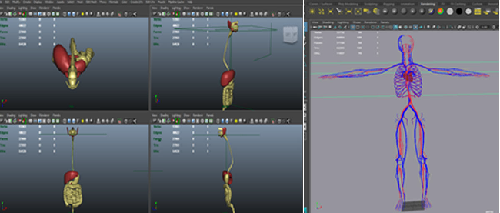


Indian Journal of Science and Technology
Year: 2020, Volume: 13, Issue: 23, Pages: 2355-2370
Original Article
Rafeek Mamdouh1,2*, Hazem M El-Bakry2, Alaa Riad2, Nashaat El-Khamisy3
1Assistant Lecturer. Multimedia and Graphics Dept., Faculty of Filmmaking & Performing Arts, BADR University, Cairo, Egypt
2Information Systems Department, Faculty of Computer & Information Sciences, Mansoura University, Egypt
3Computers and Information Systems Dept, Sadat Academy, Cairo, Egypt
*Corresponding author
Email: [email protected]
Received Date:18 May 2020, Accepted Date:24 June 2020, Published Date:07 July 2020
Background/Objectives: In recent years, visualization systems were not only entertainment but also essential in training in our various fields. They do not depend on fixed devices only. They use visual systems, such as the headmounted display that Microsoft developed as the Mixed Reality (MR) HoloLens. Its features are equipped with engines that allow the user to interact with the headset via oral orders to communicate remotely with specialists in the surgical field in real-life situations. The main objective of the study is to use the 3D anatomical information models, the Digital Imaging and Communications in Medicine (DICOM) file and all the patient's data, its registration on Azure cloud computing system, to obtain the necessary training and support in case of encountering any emergency before and during the surgical planning. Method: This study presents the application as divided into two stages of anatomical simulation: training for local and international trainees through MR. The first stage classified (DICOM) files to the 3D model using the machine learning and HoloLens emulator of anatomy operational structure. The second stage involves Microsoft Azure and stores on cloud network by Data Lake, Azure Cosmo DB, and utilization of the Azure Spatial Anchors service to access the trainee to locate it at any time through the ID that is displayed by the IoT Sensor. Finding: This study examines Mixed Reality technology, HoloLens, and Head Mount Display to show the expected potential results to improve the surgeon's actions in surgery. This examination finished by 3D displaying anatomical models because they allow the surgeon to access the best solutions in real-life situations during the process to assess the three-dimensional holograms related to patient imaging or surgical techniques.
Keywords: Mixed reality; 3D anatomical; HoloLens emulator; medical images; Azure spatial anchors; Azure cosmo DB
© 2020 Mamdouh, El-Bakry, Riad, El-Khamisy. This is an open-access article distributed under the terms of the Creative Commons Attribution License, which permits unrestricted use, distribution, and reproduction in any medium, provided the original author and source are credited.
Published By Indian Society for Education and Environment (iSee)
Subscribe now for latest articles and news.